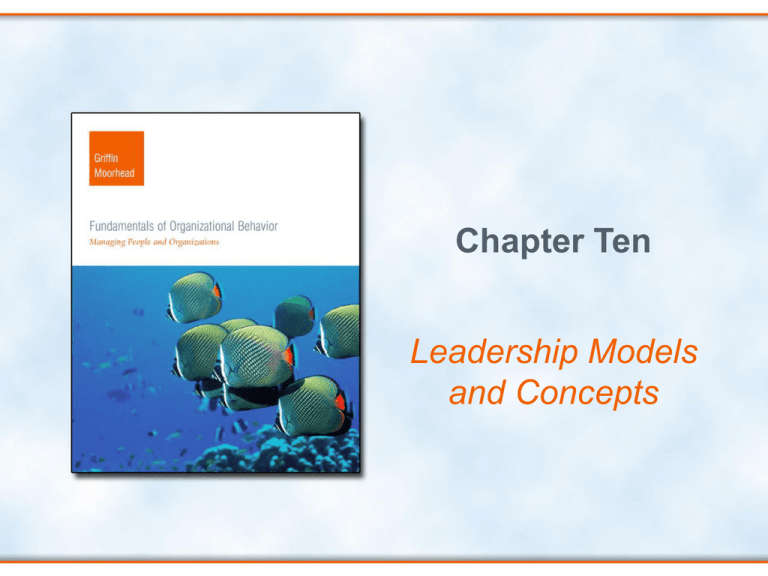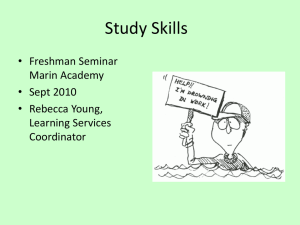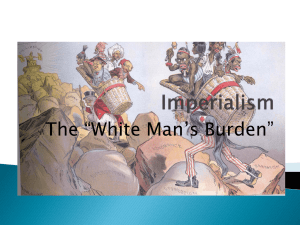
Chapter Ten
Leadership Models
and Concepts
Chapter Objectives
•
•
•
•
•
Characterize the nature of leadership.
Trace the early approaches to leadership.
Describe the LPC theory of leadership.
Discuss the path-goal theory of leadership.
Describe Vroom’s decision tree approach to
leadership.
• Discuss to other contemporary approaches to
leadership.
Copyright © Houghton Mifflin Company. All rights reserved.
10-2
The Nature of Leadership
• Leadership is both a process and a property.
– Process – leadership is the use of noncoercive
influence to direct and coordinate the activities of
group members to meet a goal.
– Property – leadership is a set of characteristics
attributed to those who are perceived to use such
influence successfully.
• Leadership is vital because it has such a
powerful influence on individual and group
behavior.
Copyright © Houghton Mifflin Company. All rights reserved.
10-3
Table 10.1: Distinctions Between Management
and Leadership from A FORCE FOR CHANGE
Copyright © Houghton Mifflin Company. All rights reserved.
10-4
Early Approaches to Leadership
• Trait Approaches to Leadership attempted to identify
stable and enduring traits that differentiated effective
leaders from non-leaders.
– The studies were largely unsuccessful in identifying
universal leadership characteristics but in recent years, the
trait approach has received renewed interest.
– Some researchers have sought to reintroduce a limited set
of traits into the leadership literature:
Drive
Honesty and integrity
Cognitive ability
Charisma
Copyright © Houghton Mifflin Company. All rights reserved.
Motivation
Self-confidence
Knowledge of the business
10-5
Early Approaches to Leadership (continued)
• Behavioral Approaches to Leadership
attempted to determine what behaviors are
associated with effective leadership.
– In the late 1940s, researchers began to shift away
from the trait approach and look at leadership as
an observable process or activity.
– Researchers assumed the behaviors of effective
leaders differed somehow from the behaviors of
less effective leaders.
– The behavioral approach to the study of
leadership included the Michigan studies and the
Ohio State studies.
Copyright © Houghton Mifflin Company. All rights reserved.
10-6
The Michigan Studies
• These studies defined job-centered and
employee-centered leadership as opposite
ends of a single leadership dimension.
– Leaders who exhibit job-centered behaviors:
• Pay close attention to the work of subordinates
• Explain all work procedures
• Are interested mainly in performance and effective
completion of the task
– Leaders who exhibit employee-centered
behaviors:
• Pay close attention to the human aspects of the group
• Attempt to build effective work groups with high
performance goals
Copyright © Houghton Mifflin Company. All rights reserved.
10-7
The Michigan Studies (continued)
• Difference Between Styles
– Any given leader can exhibit either jobcentered or employee-centered leader
behavior, but not both at the same time.
• Impact on Group Performance
– The studies suggested that employeecentered leader behavior is more likely to
result in effective group performance than
is job-centered leader behavior.
Copyright © Houghton Mifflin Company. All rights reserved.
10-8
The Ohio State Studies
• These studies were conducted at the same
time as the Michigan studies (late 1940s &
early 1950s).
• The studies identified several forms of leader
behavior but tended to focus on the two most
significant ones:
– Consideration behavior – involves being
concerned with subordinates’ feelings and
respecting subordinates’ ideas
– Initiating-structure behavior – involves clearly
defining the leader-subordinate roles so that
subordinates know what is expected of them
Copyright © Houghton Mifflin Company. All rights reserved.
10-9
The Ohio State Studies (continued)
• Differences With Michigan Studies
– Unlike the employee-centered and job-centered leader
behaviors, consideration and initiating structures were
not thought to be on the same continuum.
– The Ohio State researchers also investigated the
stability of leader behaviors over time, finding that an
individual’s leadership pattern appeared to change little
as long as the situation remained fairly constant.
– The Ohio State and Michigan studies attracted
considerable attention at the time they were published,
but later research on each model has revealed
significant weaknesses.
Copyright © Houghton Mifflin Company. All rights reserved.
10-10
Figure 10.1: Early Behavioral Approaches to
Leadership
Copyright © Houghton Mifflin Company. All rights reserved.
10-11
The LPC Theory of Leadership
• The LPC (Least Preferred Coworker) Theory
– Developed by Fred Fiedler, attempts to explain
and reconcile both the leader’s personality and the
complexities of the situation.
– Contends that a leader’s effectiveness depends
on the situation and, as a result, some leaders
may be effective in one situation or organization
but not in another.
Copyright © Houghton Mifflin Company. All rights reserved.
10-12
Elements of the LPC Theory of Leadership
• Task Motivation Versus Relationship
Motivation
– Fiedler and his associates maintain that
leadership effectiveness depends on the match
between the leader’s personality and the situation.
• Fiedler also identified three factors that
determine the favorableness of the situation:
– Leader-member relations
– Task structure
– Leader position power
Copyright © Houghton Mifflin Company. All rights reserved.
10-13
Elements of the LPC Theory of Leadership
(continued)
• Leader Motivation and Situational
Favorableness
– Fiedler and his associates conducted numerous
studies examining the relationships among leader
motivation, situational favorableness, and group
performance.
– Eight combinations of the dimensions Fielder
studied emerged, which define a continuum
ranging from very favorable (from the leader’s
perspective) to very unfavorable.
Copyright © Houghton Mifflin Company. All rights reserved.
10-14
Table 10.2: The LPC Theory of Leadership
Copyright © Houghton Mifflin Company. All rights reserved.
10-15
The Path-Goal Theory of Leadership
• The path-goal theory of leadership
suggests that effective leaders clarify
the paths (behaviors) that will lead to
desired rewards (goals).
• Leader Behaviors
– Leaders are advised to vary their behaviors
in response to situational factors such as
personal characteristics of subordinates
and environmental characteristics.
Copyright © Houghton Mifflin Company. All rights reserved.
10-16
Figure 10.2: The Path-Goal Theory of
Leadership
Copyright © Houghton Mifflin Company. All rights reserved.
10-17
Evaluation and Implications of Path-Goal
Theory of Leadership
• Evaluation
– The path-goal theory was designed to provide a
general framework for understanding how leader
behavior and situational factors influence
subordinate attitudes and behaviors.
• Implications
– Future work actually has supported the theory’s
major predictions, but it has not validated the
entire model.
– Many of the theory’s predictions remain overly
general and have not been fully refined and
tested.
Copyright © Houghton Mifflin Company. All rights reserved.
10-18
Vroom’s Decision Tree Approach to
Leadership
• Basic Premise
– This approach attempts to prescribe how much
participation to allow subordinates in making
decisions.
– A key component of the model is determining how
much to involve subordinates in making decisions.
– The model requires that managers use one of two
different decision trees:
• Time-driven model (tree) – intended for use in making an
effective decision as quickly as possible
• Development-drive model (tree) –used for developing the
decision-making skills of others
Copyright © Houghton Mifflin Company. All rights reserved.
10-19
Vroom’s Decision Tree (continued)
• Situational Factors
– After choosing a tree, the leader assesses the
situation in terms of several factors. This
assessment involves determining whether the
given factor is “high” or “low.”
– Factors include:
• Decision significance
• The importance and likelihood of commitment by
followers
• The leader and group’s expertise
• Group support
• Team competence
Copyright © Houghton Mifflin Company. All rights reserved.
10-20
Vroom’s Decision Tree (continued)
• Decision Styles and Subordinate Participation
– The five decision styles are:
•
•
•
•
•
Decide
Delegate
Consult (individually)
Consult (group)
Facilitate
• Vroom’s decision tree approach represents a
very focused but quite complex perspective
on leadership.
Copyright © Houghton Mifflin Company. All rights reserved.
10-21
Figure 10.3:
Vroom’s
Time-Driven
Decision Tree
Reference: Vroom’s Time-Driven
Decision Tree from A Model of
Leadership Style, by Victor H.
Vroom. Copyright 1998. Reprinted
by permission of Victor H. Vroom.
Copyright © Houghton Mifflin Company. All rights reserved.
10-22
Figure 10.4: Vroom’s Development Driven
Decision Tree
Insert Figure 10.4 Here
(Chapter 10 – Page 270)
Reference: Vroom’s Time-Driven Decision Tree from A Model of Leadership Style, by Victor H. Vroom.
Copyright 1998. Reprinted by permission of Victor H. Vroom.
Copyright © Houghton Mifflin Company. All rights reserved.
10-23
Evaluation and Implications of
Vroom’s Model
• Since Vroom’s current approach is relatively
new, it has not been fully scientifically tested.
– There is some support for the idea that individuals
who make decisions consistent with the model’s
predictions are more effective than those who
make decisions inconsistent with it.
• The model appears to be a tool mangers can
apply with some confidence in deciding how
much subordinates should participate in the
decision-making process.
Copyright © Houghton Mifflin Company. All rights reserved.
10-24
The Leader-Member Exchange Model
• This model stresses the fact that leaders
develop unique working relationships with
each of their subordinates.
– Supervisors establish a special relationship with a
small number of trusted subordinates referred to
as the in-group; subordinates who are not part of
this group are called the out-group.
– The in-group usually receives special duties
requiring responsibility and autonomy; members
may also receive special privileges.
– Studies have generally found that in-group
members have a higher level of performance and
satisfaction than out-group members.
Copyright © Houghton Mifflin Company. All rights reserved.
10-25
Figure 10.5: The Leader-Member Exchange
(LMX) Model
Copyright © Houghton Mifflin Company. All rights reserved.
10-26
The Hersey and Blanchard Model
• The Hersey and Blanchard Model identifies
different combinations of leadership
presumed to work best with different levels of
organizational maturing on the part of
subordinates.
• As the maturity of the followers improves, the
leader’s leadership style can shift from a
“telling” style to a “selling” style and, finally, to
a “delegating” style.
Copyright © Houghton Mifflin Company. All rights reserved.
10-27
Figure 10.6: The Hersey and Blanchard
Theory of Leadership
Reference: The The Hersey and Blanchard Theory of Leadership Model is the registered
trademark of the Center for Leadership Studies, Escondido, CA. Excerpt from P. Hersey,
Management Organizational Behavior Utilizing Human Resources, 3rd. ed., 1977, p. 165.
Copyright © Houghton Mifflin Company. All rights reserved.
10-28







